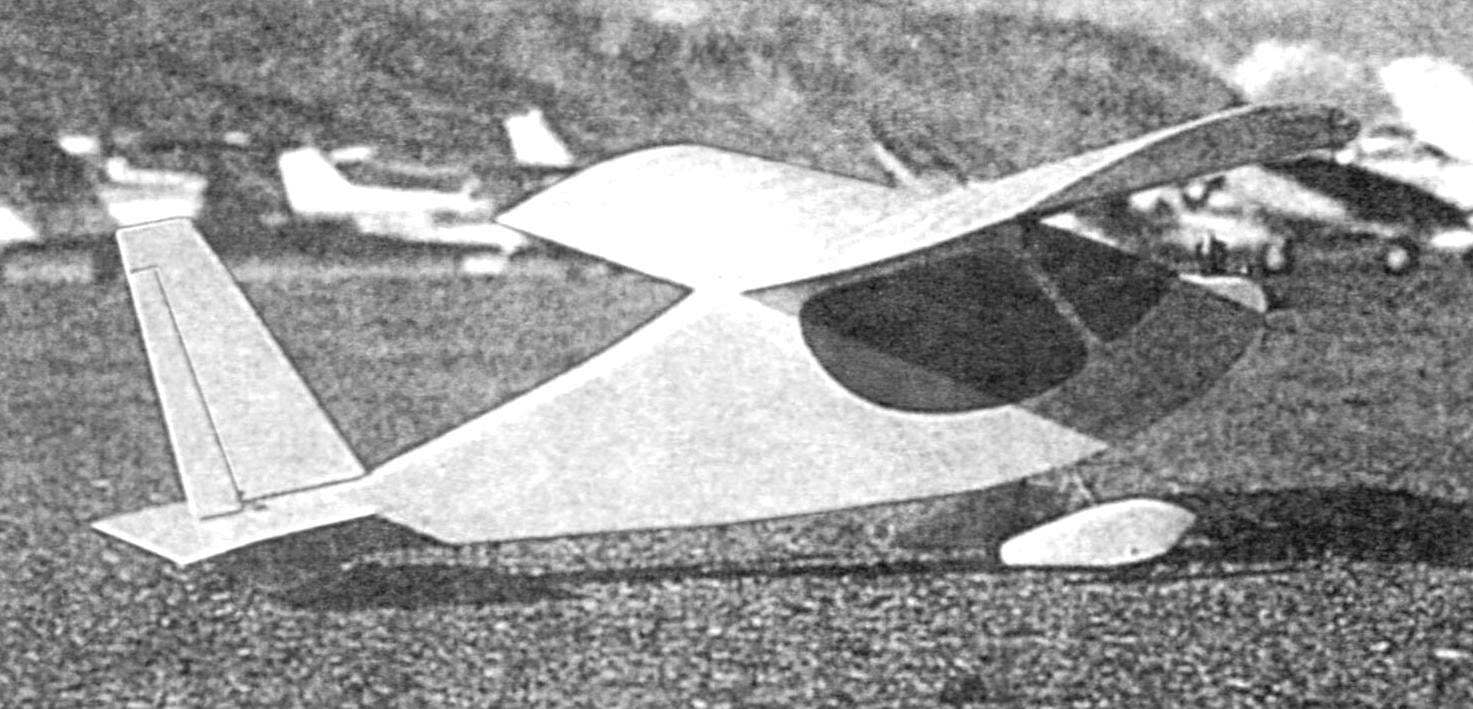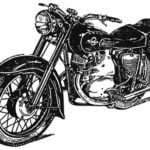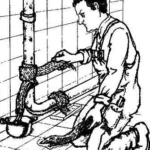 Modern modeling is different from the former, purely sports – this will not argue. The vast majority of adherents of the above-mentioned Hobbies is building models, not related to the competition. First, as it is abroad, a similar situation now exists in Russia.
Modern modeling is different from the former, purely sports – this will not argue. The vast majority of adherents of the above-mentioned Hobbies is building models, not related to the competition. First, as it is abroad, a similar situation now exists in Russia.
More recently, almost all the planes and gliders of the “entertainment division” had parameters close to the sports cars FAI. Simplified radically with unique handling properties of the class “fan fly” received further development – now many companies offer a wide range prokopenya models with a flat fuselage. To “entertainment” can now be attributed to a large number of copies produced by companies that have no sporting purpose.
With engines models removed the conditional restriction of 10 cm3, and now you can meet a serial multi-cylinder motors with a total volume of 200 cm3. And what can we say about electrics, power Moto installations which are now measured not in units and tens and thousands of Watts, or about a serial turbojet engines with a thrust in the tens of pounds!
However, along with the passion models-giants there is also the opposite direction. This is the construction of miniature winged machines.
It is no less interesting and also creates many engineering problems, however, is of another kind. For small models is very characteristic of the most severe saving mass. To keep small specific load, you have to go to such design lengths, which never dreamed of “gigantomania”.

Try for once to build a small radiosure and you’ll understand that the level of problems is completely different. It should be noted here that fans of giant vehicles is also constantly saying about the excess weight of them models.
The practice clearly shows that the larger models are much easier to alleviate than traditional. Now it makes no sense to go into discussion. Therefore, we need only recall that the only pilots in a very short time learned how to create beautiful aircraft with retractable landing gear and powerful engines, lying down in weight just over 4 kg. It is the ratio of the scale and length of their cars 2×2 meters! But recently they are also building a much more elegant “herring” relatively small size, could not create polatajko lighter 3.5 kg and constantly harped on the desire to lighten the plane.
Until recently modelistica the press focused a great reklamonositeley machines, completely forgetting about the existence of “jewelers”. And they did not suffer from this, quietly developing in his circle and guided by the principle: “the Greater the stool will be able to do almost everyone, but the wooden clock with a spring made of bamboo…” And it turns out that fans of miniaturization in number not less than gigantomania! Another thing is that their models are not as noticeable and noisy. But it is time that journalists almost simultaneously with moderatsii firms finally noticed that a new hobby modelers not only exists, but is constantly expanding. Now, it seems, the fashion and on a small model!
For miniaturists, big firms began to produce a wide range of specialized equipment with ball bearing cars standard schemes weighing only from 4 to 9, a List of ready-brand models has tens of types. Also, there are special electrical power plant. And apparently, this is only the beginning.
As far as is known, in Russia there are many modelers who always “liked” microplane, and now follow with great interest the rapid development of new fashion. Their attention is today’s material. For starters, we describe a relatively simple machine, although in this mikroklassa created a lot of good pilotage, “fun-fly” planes and polycopy.
The proposed verneplan created in the style of these MICROLIGHT (ultralight aircraft). Designed and built this model American Fred Reese, the plans were repeatedly published in foreign publications. “Buttercup” – so named designer of his creation – is a very simple and feasible scheme, and simple in construction. However, despite the structural advantages of the “Little fat man” (a nickname the plane got ours), it cannot be recommended to beginners. Suggest to take up this model only to those who managed to gain at least some experience in piloting RC planes. The fact that the limited dimensions of the flight speed of the model does not meet the “scale” (by the way, this applies to any other representative of miniature technology).
Wing has a single “V” designed all-in-one. On the fuselage it is fixed with beech dowel on the leading edge and two nylon screws at the rear. The frame is assembled in two separate halves and a short center section on a flat stocks. Before you tight the knots are glued together (the connections increase longerone plate of solid balsa 3 mm thick).
The entire frame of the wing is made of balsa. Spars consoles represented balsa strips section mm. 3×12 Front edge planed balsa slats section 6×9 mm, and the rear of the rack 5×12 mm. the Ribs have a thickness of 1.5 mm. the Same material used for the inclined end of the ribs forming the edges. However, for convenience of construction and facilitate the process of covering can ending run from solid pieces of balsa and light ply. The center section is sewn balsa veneer thickness of 1.5 mm., the same material useful for scarves, an individual in all the extreme corners of the consoles. Beech pin is glued in the hole of the plywood bulkheads set at the rear end of the front edge.
The fuselage is simple, but very effective shape, has besonderen design. All sides, and the lower and upper trim are made of balsa medium density thickness of 1.5 mm leaves only the Exception of the front valance, its thickness is 3 mm. Inside the fuselage mounted only three frames. First, sawn from solid plywood with a thickness of 3 mm, is the engine mount, to which the lugs of the regular tank privertyvaetsja the whole power system. The second cut is also made of plywood, but the thickness is 1.5 mm. It is binding landing gear. At the top of the frame made the hole for the wing pin. Third, the little-loaded frame from balsa wood with a thickness of 1,5 mm. At its upper part in the assembled fuselage is placed a horizontal plate of 3-mm plywood. In it are two threaded holes at the rear edge of the wing. Before the slinky must not forget to strengthen the joints and the second sub frame with boards with plates and gussets of balsa 3 mm thick (if it seems more convenient, the gain can be glued to the sides before Assembly to the fuselage).
The plumage is completely cut from premium balsa 1.5 mm thick. the handlebars are Recommended at first to carve out integral with the fin and stabilizer, and cut only after covering these items. Suspension the handlebars are made in the form of filament loops. Hog homemade out of plywood with a thickness of 1.5 mm.
The cording on all surfaces-thermo Super MonoCote yellow. Black lining, simulating a large canopy SLA, carved from the black film of the same firm.
Chassis. A single strut is bent from a wire with a diameter of 1.5 mm (when using OVS it is recommended to increase the cross section up to 2 mm). The second frame strut is sewn with thread, and the compound spilled glue.
Semi-pneumatic wheels with a diameter of 25 mm placed in a light balsa fairings. Tail wheel represented a plywood triangular 1.5 mm thick.
Engine. This model is equipped with a glow engine Cox Tee Dee. 020 working volume of 0.33 cm3 with a propeller SOH 4,5×2 (114×51 mm). Fuel nitromethane, mark Cox Racing.
Management. The fuselage carries two-channel “Board”, represented by a small receiver, two mikromashinok ACE and power supply with a capacity of 100 Ah (battery is located under engine by the bulkhead). Note that due to the “microscopic” to the rudder, the machine work without load, and therefore even such a small power supply is enough for 30 minutes of flight model. Servomechanisms attached to the sides on double-sided sticky tape. The drive wheels arranged with thin-and-light “Budanov”.


With takeoff weight of 300 g model management very simple. The flight speed is not high nor low – just right. When you first meet the flying properties are encouraged to reduce speed rudders. In any case it is impossible to “release” the model away from yourself.
In conclusion, some advice to our modelers. Despite the fact that recommended by the author, the engine can now be ordered and purchased through our stores, it is recommended to switch to a slightly increased cubic capacity. As mentioned the motor is really tiny, and the power he has is limited. Going to the engines working volume of about 0.5 cm3, you can not so carefully approach the issue of adjusting the mode of operation of the motor and selection of the appropriate fuel. It seems ideal with the motor SOH volume of 0.8 cm3 radiolaboratory. Even if you don’t manage it, still its presence will allow to Sudoservice the engine on the ground to the desired speed (of course, the damper is then fixed). But the choice of a major “engine” will dramatically expand the possibilities to further design more interesting micro models, beginning-the “fun fly” and ending with “purebred” micropolitical. If you still think that the power the recommended motor and its mass excess, increase basic dimensions of the model by 15% (p-p then it will be 790 mm). This will increase the supporting area of 32%. The mass of the model in this case without any concern may be increased to 400 g, while maintaining the original unit load on the wing.
Note that the mass of the model itself (and it, according to estimates, is on the prototype 140 – 150 g, as the rest is given to engine and equipment) will increase by not much – the thickness of all parts remain unchanged. Appeared a reserve of 100 g further simplify the work on a yet unfamiliar to you appliances. By the way, now, perhaps, you have become more understand the problems of “miniaturists”.
Try mentally not to increase but to decrease the aircraft by 15%. Agree, this is quite a small change. But now you have to save load on the wing to make the model twice as easy! After all, we demand the withdrawal of her 84 g (in the collection it would have to weigh 216 g) you will not be able to relieve neither the equipment nor the engine.
If you liked the offered machine and you have decided on its construction, it makes sense to think of this. Look again at the fuselage. Its height is so great that it would easily to its base to create not verneplan, and the biplane! Maybe to foresee the possibility of such a modification? If so, it is better to organize under the lower wing sampling in the fuselage, close figured lid. In addition, it will provide an opportunity to test the model and aerobatic low (of course, then you have to use the third control channel to drive the Aileron). When any transformation once you rate the transition to the motor of an increased capacity recommended above.
The basic data model
Wing area of 8.6 DM2
Area G. O. 1.5 DM2
Weight 300 g
Wing loading 35g/DM2
V. SHUMEEV



